From inside (document excerpt):
Workshop Manual Engine unit A 2 (0) MD6A, MD7A AB Volvo Penta Customer Support Dept. 42200 SE-405 08 Gothenburg Sweden Workshop Manual Marine diesel engines MD6A, MD7A Contents Safety Precautions General information Repair methods Presentation MD6A MD7A Repair instructions Electrical system Special Tools Technical Data Safety Precautions Introduction This workshop manual contains technical data, descriptions and repair instructions for Volvo Penta products or product versions contained in the contents list.
User Manual Free Download. Operator’s Vehicle Manual Guide.
Ensure that the correct workshop literature is being used. Read the safety information and the Workshop Manual “General Information ” and “Repair Instructions ” carefully before starting work. Check that the warning information decals on the product are always clearly visible. Replace decals that have been damaged or painted over. Engine with turbocharger: Never start the engine without installing the air cleaner (ACL). The rotating compressor in the Turbo can cause serious personal injury. Foreign objects entering the intake ducts can also cause mechanical damage. Never use start spray or similar to start the engine. The starter element may cause an explosion in the inlet manifold. Danger of personal injury. Avoid opening the filler cap for engine coolant system (freshwater cooled engines) when the engine is still hot. Steam or hot coolant can spray out. Open the coolant filler cap carefully and slowly to release pressure before removing the cap completely. Take great care if a cock, plug or engine coolant line must be removed from a hot engine. It is difficult to anticipate in which direction steam or hot coolant can spray out. Hot oil can cause burns. Avoid skin contact with hot oil. Ensure that the lubrication system is not under pressure before commencing work on it. Never start or operate the engine with the oil filler cap removed, otherwise oil could be ejected. Stop the engine and close the sea cock before carrying out operations on the engine cooling system. Only start the engine in a well-ventilated area. If operating the engine in an enclosed space, ensure that exhaust gases and crankcase ventilation emissions are ventilated out of the working area. Important In this book and on the engine you will find the following special warning symbols. WARNING! If these instructions are not followed there is a danger of personal injury, extensive damage to the product or serious mechanical malfunction. IMPORTANT! Used to draw your attention to something that can cause damage, product malfunction or damage to property. NOTE! Used to draw your attention to important information that will facilitate work or operations. Below is a summary of the risks and safety precautions you should always observe or carry out when operating or servicing the engine. Immobilize the engine by turning off the power supply to the engine at the main switch(es) and lock it (them) in the OFF position before starting work. Set up a warning notice at the engine control point or helm. Generally, all servicing should be carried out with the engine switched off. Some work (carrying out certain adjustments for example) requires the engine to be running. Approaching a running engine is dangerous. Loose clothing or long hair can fasten in rotating parts and cause serious personal injury. If working in proximity to a running engine, careless movements or a dropped tool can result in personal injury. Avoid burns. Take precautions to avoid hot surfaces (exhausts, turbochargers, charge air pipes and starter elements, etc.) and liquids in supply lines and hoses when the engine is running or has been turned off immediately prior to starting work on it. Reinstall all protective parts removed during service operations before starting the engine. 2 Always use protective goggles where there is a danger of pieces of metal, sparks from grinding, acid or other chemicals being thrown into your eyes. Your eyes are very sensitive, injury can lead to loss of sight! Avoid skin contact with oil. Long-term or repeated contact with oil can remove the natural oils from your skin. The result can be irritation, dry skin, eczema and other skin problems. Used oil is more dangerous to health than new oil. Use protective gloves and avoid using oil-soaked clothes and rags. Wash regularly, especially before meals. Use the correct barrier cream to prevent dry skin and to make cleaning your skin easier. Most chemicals used in products (engine and transmission oils, glycol, petrol and diesel oil) and workshop chemicals (solvents and paints) are hazardous to health Read the instructions on the product packaging carefully! Always follow safety instructions (using breathing apparatus, protective goggles and gloves for example). Ensure that other personnel are not unwittingly exposed to hazardous substances (by breathing them in for example). Ensure that ventilation is good. Handle used and excess chemicals according to instructions. Be extremely careful when tracing leaks in the fuel system and testing fuel injection nozzles. Use protective goggles! The jet ejected from a fuel injection nozzle is under very high pressure, it can penetrate body tissue and cause serious injury There is a danger of blood poisoning.
Wikipedia’s page for Volvo Penta
Publisher: www.volvopenta.com


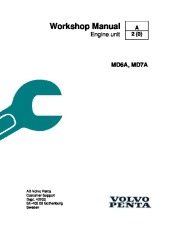 Volvo Penta MD6A MD7A Workshop Manual - 1 of 44
Volvo Penta MD6A MD7A Workshop Manual - 1 of 44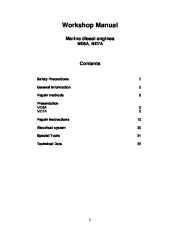 Volvo Penta MD6A MD7A Workshop Manual - 2 of 44
Volvo Penta MD6A MD7A Workshop Manual - 2 of 44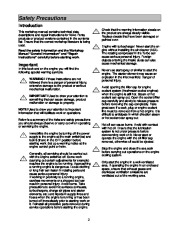 Volvo Penta MD6A MD7A Workshop Manual - 3 of 44
Volvo Penta MD6A MD7A Workshop Manual - 3 of 44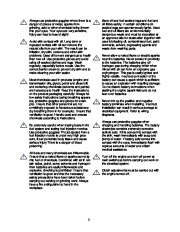 Volvo Penta MD6A MD7A Workshop Manual - 4 of 44
Volvo Penta MD6A MD7A Workshop Manual - 4 of 44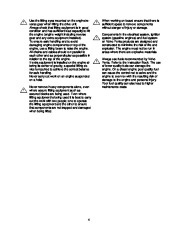 Volvo Penta MD6A MD7A Workshop Manual - 5 of 44
Volvo Penta MD6A MD7A Workshop Manual - 5 of 44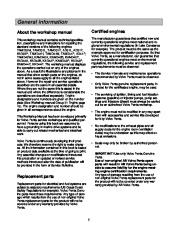 Volvo Penta MD6A MD7A Workshop Manual - 6 of 44
Volvo Penta MD6A MD7A Workshop Manual - 6 of 44 Volvo Penta MD6A MD7A Workshop Manual - 7 of 44
Volvo Penta MD6A MD7A Workshop Manual - 7 of 44 Volvo Penta MD6A MD7A Workshop Manual - 8 of 44
Volvo Penta MD6A MD7A Workshop Manual - 8 of 44 Volvo Penta MD6A MD7A Workshop Manual - 9 of 44
Volvo Penta MD6A MD7A Workshop Manual - 9 of 44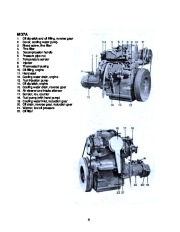 Volvo Penta MD6A MD7A Workshop Manual - 10 of 44
Volvo Penta MD6A MD7A Workshop Manual - 10 of 44